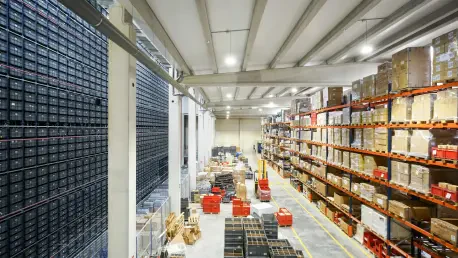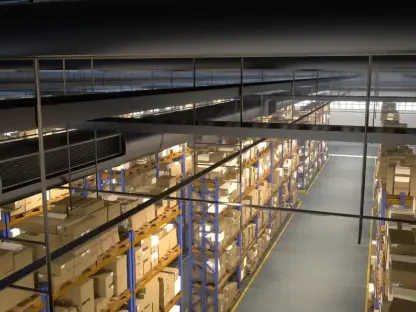Listen to the Article
Order picking is one of the basic processes that underlie the key operations of storage facilities. This method accounts for about 55% of the overall operating costs. Most enterprises apply several strategies (for example, zone, batch, or wave picking), and some have even automated their processes.
Regardless of the method chosen, any company sets up a warehouse with one main goal: to improve the efficiency and precision of the stock retrieval procedure. To accomplish that, distribution centers have followed a range of best practices, including:
Prioritize High-Velocity Items
Design a Smarter Inventory Layout
Map Out Logical Picking Paths
Ensure Real-Time Inventory Visibility
Spot and Solve Accuracy Bottlenecks
Leverage Automation to Assist, Not Replace
This article shows how applying these six effective strategies can significantly enhance order fulfillment performance, boosting both speed and accuracy across warehouse operations.
Prioritize High-Velocity Items
The way a business organizes its goods in a storage facility can significantly impact efficiency in fulfilling orders. In the industry, this process is also called “proper slotting of the product.” The term “slotting” indicates inventory placement within a picking area. It can also be considered “velocity-based slotting,” which factors in the speed at which you sell your stock.
If pickers must traverse the entire building length multiple times to gather frequently required supplies, your warehouse design is not optimized.
Evaluate your travel time, product velocity, and other relevant data, and position fast-moving items in the most accessible racks—preferably those closest to the shipping or loading dock areas.
Design a Smarter Inventory Layout
You can improve your depot layout by slotting, which means arranging your cases strategically in your warehouse. Keeping the same items together makes it easier to find and retrieve goods, which can shorten picking time. This practice is also called zoning, or establishing specific areas for various types and categories of merchandise, and it is typically used alongside zone-based order retrieval. Take a look at the different types of picking:
In zone picking, order collectors are designated to particular areas and only retrieve orders from their assigned areas. High-traffic sections, or areas that contain the SKUs with the most activity, result in a greater pick density, which has been shown to boost productivity.
Batch picking can complement a quadrant-based layout as well. Workers gather several orders from a well-labelled zone during a single trip.
On the other hand, wave picking merges the concepts of zone and batch picking. In this method, employees select multiple orders simultaneously from different sections. After they complete the orders, they separate them into distinct parcels. In some instances, regardless of the method you choose, a well-organized inventory will speed up the operation.
Last, arranging similar parcels in a checkerboard pattern to avoid mixing them up in identical neighboring bins also helps increase order fetching accuracy.
Map Out Logical Picking Paths
Once you reorganize your warehouse layout according to product turnover or grouping of similar items, drawing up (or determining) optimum (or required) picking paths is much easier. When selecting the most productive ways to retrieve different kinds of supplies, you remove the uncertainty that human or automated workers will reach the correct article with precision.
These routes also depend on the above-listed gathering strategies. In fact, they can usually be set up to guarantee that order fulfillment in a storage facility occurs as efficiently as possible. This focused measure prevents typical problems like retracing steps through visited aisles, which contributes to increased time consumption and higher operational costs.
Ensure Real-Time Inventory Visibility
The three tactics mentioned above could help increase picking accuracy, as long as there is a good foundation: precise inventory data. Articles should be easily recognizable and accessible through signage, rack labels, and stock house identifiers.
Ultimately, having your merchandise positioned optimally and establishing optimal collection routes is of little value if the necessary stock is unavailable or misplaced. Keeping correct and up-to-date records offers greater visibility into your warehouse operations and can yield insights into product turnover and other important metrics.
Spot and Solve Accuracy Bottlenecks
Recognizing key insights in your operational data can greatly improve your return on investment. On the other hand, any inability to gather and examine feedback on picking mistakes will not allow you to pinpoint where most of the errors take place. Therefore, you will not be able to concentrate on enforcing corrective measures.
Some warehouses implement the strategy of posting individual or group error rates to raise awareness among team members. However, positive reinforcement yields better results, so consider rewarding accuracy through bonuses or other incentives.
Leverage Automation to Assist, Not Replace
When people are directly involved in any procedure, mistakes are likely to happen. When it comes to order picking, repeated errors tend to make the entire route relatively inefficient. Workers who collect items in storage facilities can spend over half their time moving from one location to another to complete a single parcel, significantly wasting time and resources.
However, several technologies are available to automate this traditional routine, such as bar code scanners, conveyor systems, shuttles, and mobile robots to help employees avoid moving products manually. One can list some of the most powerful automation methods for stockrooms, which augment the efforts of the human workers instead of substituting them, so that depots can keep the human touch in them, enhance picking meticulousness, and substantially reduce the time and cost.
Item retrieval precision is crucial for warehouse operations. So, by following all the steps and adopting all the strategies aforementioned, you can optimize the process and improve accuracy and efficiency, making your distribution center handle its function even better.
Conclusion
Order picking is not just about mitigating mistakes; it involves creating an innovative, data-driven process for gathering goods accurately. This includes carefully planning how products fit into containers, managing labor needs, and controlling orders effectively. Each step is essential, from organizing articles deliberately and planning streamlined collection routes to using automation and monitoring errors in real-time.
Warehouses that analyze merchandise movement, organize efficiently, and embrace technology can decrease costs, boost employee productivity, and meet rising customer demands. By adopting these best practices, a storage facility can turn order fulfillment from a cost center into a valuable asset for the company.









